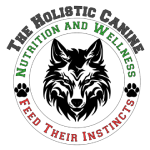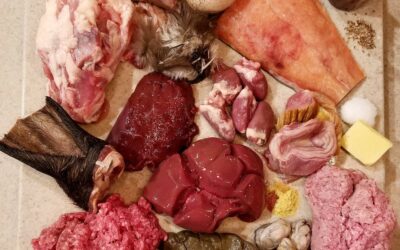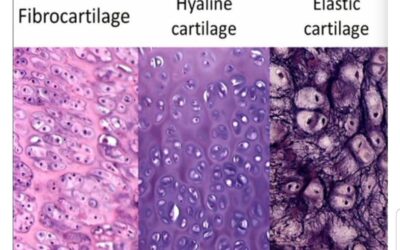Which model is best? Let your dog be the judge of that!
If you are newer to raw feeding, undoubtedly you have encountered the well-established raw food vernacular, and if you have been raw feeding for some time, then likely you are quite fluent in all the terminology and raw food model specifics. Clearly, the raw food movement is branching out into numerous directions, many of which differ immensely. Which method should you choose? Or better yet, which method is best?
Many canine nutrition professionals claim their chosen model is the correct choice. But I have news for you; what you choose for your dog must be in-line with what is best for him/her. As with anything in life, there is not just one way or one path. Biological life is highly adaptable. Cells will adapt to the best of their capacity to function both efficiently and effectively to achieve the result that is required. When it comes to dogs, they are incredibly adaptable. Thus, there are many ways that you can provide your dog with fresh, raw, whole-food meals that are both balanced and health-promoting. Which is best for your dog is up to you to discover. This requires careful observation. Consider the following…
The interesting thing about science is the massive misunderstanding surrounding it. Science is about discovery, observation, and learned outcome. It is not speculative or hypothetical. That is best left in the realm of philosophy. Science is a vehicle to learning truths by way of observation and testing. No matter what man observes, examines, and tests, there will be a result. Whether that result was the expected outcome or something entirely different, knowledge is gained by what is clearly demonstrated before observing eyes. Whenever we embark on a new journey, especially one with our dogs who lack the capacity of verbal language, we are at the mercy of observation and discovery. It is up to us, the pet parent, to be cognizant and mindful of any and all outcomes, whether beneficial or detrimental, when providing for our pets’ most basic needs. Taking our dog’s nutritional needs into our own hands requires vigilant observation of what is working and what may not be.
Pet parenting is a journey of discovery and experience. Before you can truly discover what is best for your dog, having a basic knowledge of the different raw feeding models will prove advantageous. Let’s take a look at the pros and cons of some of the common raw food methods. Deciding where to start may be one of convenience or ability. But we all need to start somewhere. Do your best to decide what may be best for your dog (and you!) and then observe as many details as is possible. Keep a journal if need be, but let’s journey together to discovering the best for your dog.
BARF (Biologically Appropriate Raw Foods, formerly Bones And Raw Food)
Dr. Ian Billinghurst started this model back in the late 1980s. He published his book, Give Your Dog a Bone, in 1992 and the rest is history. BARF began as a raw meaty bones (RMB) feeding plan. Dr. Tom Lonsdale was also a huge proponent for RMBs after his observations of the severely declining tooth and gum health of clients’ dogs. This led him to researching and discovering a way to resolve this serious and growing concern. He too discovered the obvious: give the dogs RMBs and observe the extraordinary changes in not only tooth and gum health, but overall health coupled with a rapid decline in chronic disease. Nine years after Dr. Billinghurst, Dr. Lonsdale released Raw Meaty Bones Promote Health.
This model was created to center around the RMBs. From 40% to as much as 60% of a dog’s daily food needs come from RMBs. The remaining dietary needs come from additional boneless meat and organs. Further, 5% to 10% of the diet consists of vegetables and fruit. The standard ratio guideline to follow is 70/10/10/10 which are the ratios closest to whole prey with the addition of vegetables and fruits. This equates to meat at a rate of 70% of the diet, organs at 10%, bone 10%, and vegetables and fruit 10%. It takes a little bit of math to figure the 10% bone requirement when feeding RMBs, but simply put, the standard recommendation of 40% to 60% RMBs averages out to 10% to 15% bone. This is an ideal representation of whole prey. While Dr. Lonsdale does not promote a heavy emphasis on vegetables and fruits, Dr. Billinghurst does. BARF, however, has evolved.
There exists several concerns with the current BARF model. Today’s BARF, in addition to vegetables and fruit, now includes nuts, seeds, yogurt, kefir, cottage cheese, goat milk products, and fermented vegetables. These foods are more in line with omnivores. And that is just it. Some BARF feeders understand dogs to be omnivores; therefore, including 25% (and sometimes more) plant matter along with other foods is of no concern. So the 70/10/10/10 ratio is no longer followed by many BARF feeders. Additionally, BARF can allow for a high carbohydrate and fiber percentage due to the enormous percentage of the meals coming from vegetables and fruit. High carbohydrate and fiber diets, even from fresh wholesome fruit and vegetables, are not always conducive to a facultative carnivore’s physiological processes.
On the other hand, the variety of vegetables and fruit that can be offered in the BARF model allows for ease in meeting nutrient requirements. Just how beneficial these varietal offerings are is yet to be fully determined as many dogs simply do not do well on plant matter. Additionally, BARF model proponents also tend to be heavy handed on the supplementation.
What is most troublesome, however, is the fact that whole RMBs are being removed entirely and replaced with grinds. Grinds are meat, organ, bone, vegetables, fruits, and seeds ground together. This defeats the whole point and purpose of BARF’s original intention: to give dogs bones to chew! Dogs absolutely need to chew or dental health will decline even on a raw diet. Grinds are only ever needed for dogs without teeth to chew. And even then, giving toothless dogs recreational bones massages the gums and provides them with a pacifying and satisfying activity.
The original BARF model has tremendous value. One would be wise to go back to the original idea.
Pros:
- There is no doubt that feeding RMBs promotes exceptional dental health as well as healthy bodies. Chronic disease rates dropped dramatically in RMB-fed dogs. Observation over several decades has shown this to be true.
- Some vegetables and fruit have been proven in a study to be highly beneficial to many dogs; however, the study was completed on kibble fed dogs that were offered fresh vegetation as a supplement to their kibble. There was a 90% reduction in chronic disease among the kibble fed dogs offered fresh foods.
- BARF is flexible and allows for a variety of foods to be offered to your dog.
Cons:
- The variety of foods now being offered under the BARF model is going a tad bit beyond what is considered species-appropriate. An enormous percentage of vegetables and fruits along with nuts, seeds, and dairy/goat products are now considered BARF appropriate food choices.
- Vegetables need to be pureed or cooked for a carnivore to benefit. The most nutritious vegetables contain oxalates which are damaging to the gut, joints, and nerves as well as reducing the absorption of calcium and iron.
- Fruit and starchy vegetables can cause yeast proliferation in many dogs.
- Nuts and seeds contain anti-nutrients and must be ground. They require the addition of vitamin C to counter the effects of phytates. They are also high in fat and add a tremendous amount of calories, thus can only be fed in small amounts.
- BARF can be far too high in fiber and carbohydrates. High fiber can create gut irritation among other concerns. Numerous studies show the increased risk for disease and obesity when high carbohydrate diets are consumed.
- If one steers too far away from the original RMB BARF model and feeds grinds, the advantages of BARF are no longer applicable. Dental health is key to a healthy body and chewing is critical for mental poise.
PMR (Prey Model Raw)
PMR is based on the understanding that dogs are domesticated wolves. It has been determined that the modern domestic dog’s DNA is a mere 0.2% different from the wolf. Anatomically, domestic dogs are clearly carnivorous. Physiologically, it is also taught that our dogs are indeed carnivores. Thus, this model feeds whole prey or a variation of prey that includes only meat, organs, and bones in a ratio of 80/10/10. The ratio is the approximate percentages of what a dog would consume if eating a whole animal. This equates to meat being 80% of the diet, secreting organs as 10% (5% liver and 5% other), and 10% bone. In reality, whole prey has an average of 12% bone, thus the idea is that the ratio is a guideline which can and should vary. No vegetation or carbohydrates of any kind are fed in this model.
There exist several arguments against PMR. For one, studies have determined that domestic dogs not only produce pancreatic amylase*, but it has also been measured in their saliva. BMC Veterinary Research has identified salivary amylase in Beagles. It has also been discovered that domestic dogs contain four to thirty copies of the AMY2B gene that codes for amylase enzyme while the wolf contains a mere two copies. So what does this prove? While it might appear that these finding indicate that dogs are omnivores, especially if one was to interpret the data through a biased mind-frame, in reality, it does not prove or suggest the evolution to omnivore. After all, anatomically, dogs are clearly carnivorous. A conclusion can only be correctly drawn by seeing the whole picture. And, one must also have a good understanding of genetics to see this accurately. What these finding show is that dogs have adapted to life with humans and their foods. Clearly, dogs have flourished. What we see here is an example of adaptation within the genes. Gene expression is turned on or off dependent upon environment and available food. It is thus clear that dogs can digest some carbohydrates with no ill effects, while some dogs may even thrive with the addition of minimal carbs. However, their carnivorous anatomy and physiology remains predominant.
PMR can appear to be very difficult to balance if whole prey is not being offered. And yet, the variety of protein options may provide the optimal platform for maximum nutrient uptake due to the consistently varying nutrient profiles and the high bioavailability of the macro and micronutrients. Nevertheless, many opponents of PMR criticize the assumed nutrient deficient meals. Trace minerals are richest in vegetables and seeds and are extremely difficult to maximize with meat, organs, and bone alone; or so it is thought. It cannot, however, be denied that many dogs are living to long ages disease-free on PMR.
Pros:
- Simple to feed, especially if feeding whole prey.
- The 80/10/10 ratio is a straightforward guideline that allows for easy meal creations.
- Easily digestible with very little waste in terms of poop.
- High bioavailability with no anti-nutrients which quite possibly allows for maximum nutrient uptake.
- PMR is flexible allowing for a variety of protein sources or very few if whole prey can be sourced.
- Ideal for dogs with sensitivities and limited proteins.
Cons:
- It is difficult to meet the NRC recommended allowance (RA) for nutrients. In fact, it is often even difficult to meet the AAFCO and NRC minimum nutrient requirements if using a diet designer software. However, many pet parents using spreadsheets are able to provide balanced meals with careful planning and ingredient sourcing.
- Nutrient profiles for animal parts that are not edible for humans are generally unknown. This often causes audited PMR meals to reflect low in nutrients. Aside from calcium and phosphorus, it is also unknown to what extent bone minerals contribute to fulfilling nutrient requirements. Further, it is unknown to what extent blood contributes to nutrient needs.
- Whole prey can be very difficult to source and is often very challenging to feed to toy and small breeds.
- Feeding whole prey is not for the squeamish and can be very messy.
Frankenprey (generally follows PMR, but can also be used with BARF)
Frankenprey can be very simple or very complicated. The idea is that you create a semi-whole animal out of various parts from either one animal or various animals to mimic whole prey. For example, a meal may include a chicken drumstick with skin (RMB), ground chicken, chicken liver, chicken hearts, chicken gizzard, chicken lung, chicken paw, and feathers. Or, a meal may include a chicken thigh with skin (RMB), grass-fed ground beef and beef tongue, sardines along with beef heart, turkey gizzard, calf liver and pork kidney, a duck neck or chicken paw, and a bonus of chicken feathers or a furry rabbit ear. Many pet parents are also able to source blood and will add beef or chicken blood, for example. Quail, chicken, and duck eggs may also be added.
Meals are created by following the PMR 80/10/10 ratio guideline. Or the BARF variation ratio of 70/10/10/10 with the option of adding vegetables, fruit, seeds, apple cider vinegar, and/or fermented dairy/goat products for additional nutrients and value in a small percentage generally around 5% to 10%. The idea is to mimic prey so the addition of vegetables, fruit, etc. is meant to replicate stomach contents for nutrient purposes.
Because many pet parents use additional ingredients, this model can easily meet nutrient requirements.
Pros:
- Frankenprey, like PMR, can be nutritionally accurate to whole prey when done correctly. This model can be an exceptional choice because it provides variety and varying nutrient profiles which provides the correct platform for optimal nutrient absorption.
- It can be very simple to create if planned properly as ratios are easy to follow.
- Frankenprey can allow for highly digestible meals with good nutrient ratios often exceeding NRC’s RA.
- This model can source all meat and organs from one animal protein to “create” a whole animal which is ideal for dogs with sensitivities who are limited to few proteins. Or a variety of proteins can be sourced to “create” an animal from multiple animal parts. Thus, it is very flexible.
- These meals can be fun to create…really!
Cons:
- Frankenprey requires careful planning and the ability to source many hard-to-find ingredients.
- Determining the nutrients in each meal requires quite a bit of research searching for food nutrient values along with math. Or a spreadsheet calculator can be used to simplify the nutrient findings.
- Can be very, very time consuming and takes a dedicated pet parent.
Ratio Diet
This model is just another name for following the PMR 80/10/10 ratio or another ratio such as the 70/10/10/10 ratio belonging to BARF. Ratios can vary greatly yet they are all meant to be guidelines for creating meals that most accurately represent the percentages of whole prey. Popular ratios include:
80/10/10 (80% meat, 10% organs, 10% bone)
70/10/10/10 (70% meat, 10% organs, 10% bone, 10% veg/fruit/other)
65/15/10/5/5 (65% muscle meat, 15% organ muscle, 10% bone, 5% liver, 5% secreting organ). This is an exceptional ratio to follow to maximize nutrient potential.
75/10/5/5/5 (75% meat, 10% bone, 5% liver, 5% secreting, 5% other). This is also an excellent ratio for meeting nutrient requirements and to maximize nutrient absorption.
The pros and cons for this model are all dependent upon exactly how the meals are created and can include any of the above listed for each model.
Homemade DIY Meals
This model is an anything-goes type of dietary plan. Proponents of this plan are generally focused on sourcing nutrients and meeting NRC recommended allowance (RA) requirements while paying little to no attention to ratios or modeling whole prey. Meals can have both raw and cooked foods and include everything from meat and organs to oatmeal, kidney beans, fruits, lentils, vegetables, quinoa, soy, cottage cheese, nuts, seeds, peas, sweet potatoes, and on and on. Many of the pet parents subscribing to this philosophy assert that they feed a science-based diet plan. This idea is touted because they follow the nutrient guideline chart from the NRC’s book Nutrient Requirements of Dogs and Cats which was compiled for the purpose of setting updated standards for processed commercial dog foods. However, there are numerous concerns with this free-for-all approach to choosing and sourcing foods.
For one, it is obvious that many of the above listed foods are in no way species-appropriate. Choosing specific foods simply to provide a required nutrient or two without any concern for the fact that the foods are not appropriate for dogs can be highly unfavorable or even injurious in the long run. Foods must be biologically-appropriate to be advantageous and health-promoting.
Many of the pet parents following this plan tend to be recipe driven, thus there is the concern over following the same recipe or two over and over without variation. This subjects dogs to the same nutrient profile with the same antagonism and synergism thereby greatly increasing the chance for nutrient deficiencies and toxicities and potential chronic conditions. This is the opposite of the very reason a pet parent would choose to follow this plan. Following a minimum of five recipes in a rotation is a much better option.
A major concern with following this plan, however, is the use of grains and legumes. These foods are not only inappropriate for dogs, but are not even appropriate for humans. Grains and legumes contain anti-nutrients, toxins, enzyme inhibitors, are gut irritants, increase inflammation, erode joints, greatly increase the rate of arthritis and crippling disease, and are cause for poor gut mineral absorption, among others. Legumes notably are implicated in the rapid rise in the incidences of dilated cardiomyopathy (DCM).
Proponents of this plan tend to rely heavily upon auditing programs and software diet designer programs to create meals. Unfortunately, most, if not all, diet auditing and meal creation programs do not include or account for bone. As a result, most of these pet parents are either creating or receiving recipes (from dog nutrition professionals) void completely of bone with the addition of a calcium supplement. That is an enormous step away from what is natural and species-appropriate. Having to rely upon supplementation to meet needs is completely contrary to nature. Bone is perfectly balanced and essential. Since some well-meaning pet parents understand this, they turn to bone meal as their calcium source. Bone meal is a less-than-ideal (to put it lightly) source of minerals. The high heat needed to create the product causes the minerals to be poorly absorbed with the added concern for the potential of creating an inappropriate calcium to phosphorus ratio. It is necessary for a dog, and especially puppies, to receive the proper calcium to phosphorous ratio for optimal nutrient absorption and synergy. Even worse, bone meal contains contaminants that can poison your dog and could potentially be fatal.
Because the main focus of this model is meeting NRC nutrient requirements and not bioavailable species-appropriate foods and whole-prey ratios, supplementation can be very heavy-handed. Supplements are never an ideal nutrient source. When supplements are needed, food-source nutrients (whole-food supplements) should be chosen.
And finally, due to the high percentage of inappropriate food sourcing, pet parents who are not nutritionally educated may be unaware that their meal plans do not provide the ideal platform for adequate nutrient absorption and assimilation. Dogs consuming meals following this model on a long-term basis can be similar to the unfavorable ramifications to health as seen in dogs consuming commercially produced dog food. Poor skin, yeast proliferation, chronic ear irritation and infection, weight gain, poor oral/dental health, allergies and sensitivities, joint deterioration, inflammation, hip concerns in larger breeds, hypothyroidism, tumor formation, chronic disease, and cancer are more common with this method especially if species-inappropriate foods are part of the regular diet. Feeding meals under this model requires careful observation and costly yearly blood work from a licensed veterinarian.
Pros:
- When the sky is the limit, meeting nutrient requirements is a breeze.
Cons:
- Feeding foods with no regard to the inappropriateness and unsuitability to a dog’s physiology is reckless and potentially harmful. Meeting nutrient requirements with foods not suitable gains no benefit. The hypothetical fulfillment of nutrients on a software program provides more benefit to the pet parent’s psyche than to their dog’s health.
- Providing meals with no regard for the ratios of wild prey leads to meals that are unbalanced and potentially deficient in amino acids from animal flesh and organs. Dogs have a high requirement for amino acids. Adding a percentage, even small, of a cooked grain or legume reduces the species-appropriate bioavailable protein needs that dogs must receive from meat and organs. It also reduces iron requirements and reduces gut absorption of the little iron that the meals contain.
- Vegetables need to be pureed or cooked for a carnivore to benefit. The most nutritious vegetables contain oxalates which are damaging to the gut, joints, and nerves as well as reducing the absorption of calcium and iron.
- Fruit and starchy vegetables can cause yeast proliferation in many dogs.
- Nuts and seeds contain anti-nutrients and must be ground. They require the addition of vitamin C to counter the effects of phytates. They are also high in fat and add a tremendous amount of calories, thus can only be fed in small amounts.
- Numerous studies have shown the damaging effects of grain and legume consumption in both humans and animals. Grains contain anti-nutrients and toxins and must be soaked, germinated or sprouted, then cooked in a pressure cooker until mush. Legumes are simply inappropriate, period. Aside from the anti-nutrients, they are toxic, not digestible, block absorption of minerals and taurine (leading to the rapid increase in dilated cardiomyopathy or DCM), cause gut irritation, sensitivities, joint destruction, gassiness, a condition known as bloat, and so much more.
- High carbohydrate diets have been shown over and over to have damaging effects on a dog. It puts them at an increased risk for chronic disease, obesity, cellular damage, and cancer.
- Meals created and generated from a software program with no regard for actual nutrition science, nutrient antagonism and synergy, species-appropriate food choices, and what nature dictates as suitable for facultative carnivores will in no wise promote or cultivate optimal health, healing, or prevent disease.
In conclusion, taking your dog’s nutritional needs into your own hands requires dedication, in fact, a great deal of dedication, education, time, and determination. What it comes down to is providing the best nutrition plan that you are able. This requires observation and watchfulness. Any adverse changes in your dog must be taken into consideration and analyzed to discover the cause in order to remove it promptly. Making amendments to your chosen dietary plan or model is a necessity as your dog’s requirements will change with age, environment, stress, health conditions, changes in family dynamic, and so forth.
Understand that there is no rule that says you must follow a particular model exactly, or even that you need to follow only one. Variety is the spice of life. Be creative!
*amylase is the enzyme needed for carbohydrate digestion
©2019 Kimberly Lloyd, PhD, BCHHP, Cert Raw Dog Food Nutritionist



